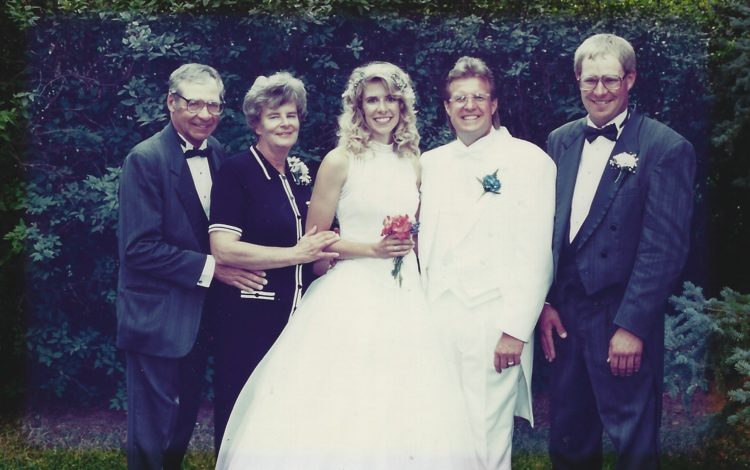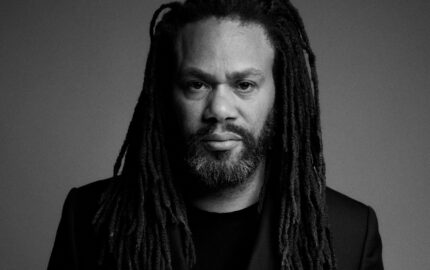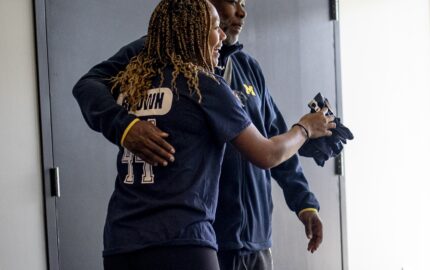"It's scary."
Jessica Ravitz, a freelance reporter and storyteller, reported on the prevalence of suicide in rural America for CNN Digital in August 2018. According to a 2015 CDC report, Montana led the nation’s suicide rate at nearly double the national average. In this human-interest piece, Ravitz traveled to Montana to get the perspective of one family affected by the trauma of suicide.
As told to Jason Stahl
Before I ever went into journalism, I was trained to interview Holocaust survivors for an oral history project launched by Steven Spielberg after “Schindler’s List” came out.
One of the things I learned in drawing out oral histories was the importance of staying strong for the person you’re interviewing. Only then can you give them the space to respond however they want. You cannot get emotional during the interview, because you don't know how the subject will react. If I started crying while listening to a Holocaust survivor, the survivor might get offended. “Who are you to cry? You haven't been through anything!” Or the survivor might stop sharing so as to protect my feelings. My tears could have shut down the entire interview.

So if you want to allow people to tell their story, you don't want to get in the way. You’re just giving the sacred space for someone else to get something off their chest. After I walked away from interviewing, I could cry all I want. That is a lesson I have carried with me, and it has served me well.
This doesn’t mean as an interviewer you can’t show compassion. You do that with your eyes, your tone, your word choices, and sometimes more. In the video that accompanied this suicide story, there’s a moment where I hugged my main source, Darla Tyler-McSherry, who had lost her father, Dick Tyler, to suicide. One of my editors was initially surprised to see me do this, and the truth is I never knew the hug would be included in the video. But in the moment it was 100 percent the right thing to do.
I had built a real connection with Darla over a period of time. She was crying next to me. There was no one there to comfort her. At the time, reaching out to give her a hug was the least I could do, and I didn't regret it.
Finding the human in the statistics
This story was one I pursued while I was on the health team at CNN. I was always looking for stories that had a human component I could dig into.
Conversations about farmers and suicide came up amid threats of tariffs, when farmers feared they would no longer be able to sell to China. When the CDC study came out about rural suicides outpacing urban suicides, I remember thinking that's interesting. What more could be explored?
Related stories
Story Craft: Editor and teacher Jan Winburn’s sensitive guide to covering victims of trauma
Strictly Q&A: John D. Sutter reporting Hurricane Maria
Strictly Q&A: Moni Basu on following an earthquake survivor in Haiti
I was searching online for a place that was hit the worst in the country. At that time Montana topped the list for the most suicides per capita. My initial pitch was to take a three-pronged approach and do a series about Montana to explain how and why suicide there had become so prevalent. One piece would have looked at a reservation where a Native American community had been rocked by story-after-story of tribe members taking their own lives. Another piece would have taken me to Butte, Montana. There were issues with a superfund site and depression related to the loss of mining.
Somewhere along the way, I was interviewing Matt Kuntz, executive director of Montana’s National Alliance on Mental Illness. We were talking about farmers, the third piece I wanted to explore, and he introduced me to Darla.
Darla and I immediately hit it off. We had some email exchanges and then a number of phone conversations. She needed to do something with her pain and desperately wanted the loss of her dad to serve some higher purpose.
After pitching these various angles to my editor, we agreed that I was being too ambitious. The decision was made to go deep on one story rather than try to do too much. If there was one story to tell, I knew it had to be about Darla. There would be the research to weave in and experts to talk to, but Darla and her family would be the vehicle for telling this story. The problem was it wasn't just Darla’s story to tell.
She needed to know that her brother Randall and her mother Lenore were going to be okay with my coming for a visit and doing a story. Her brother took a little convincing, and we didn’t know how much he would participate. And her mother was non-committal. She was okay with my coming to the family farm, but there were no promises that she would talk.
Leap-of-faith reporting
Traveling to Montana was a leap of faith in many ways. I had to trust that once everyone got to know me and my intentions, they’d feel safe and open up. I made a point of booking a few days for this trip, so there’d be some time and space to build a rapport.
I arrived in June 2018 with two videographers. Darla’s pride in the family farm, where she no longer lived, ran deep and she wanted us to see it when it was at its most beautiful. Her brother, who still farms the land, wanted us to see him hard at work. Her mother, who in the end would never say anything on the record, stood by and listened closely.
At the beginning, they focused on showing us the farm and touring the area. We got to know them and spend time with them before we ever broached the subject of suicide.
On the second day I grew a little nervous that I might not come back with the goods. That’s when I first tried to touch on what happened to Darla’s dad, and she skimmed over it. I had a brief moment of panic. What if she doesn’t want to talk about it at all? How can I write about her father’s suicide if we don’t talk about that day?
That was when I pulled Darla aside and said, “Look, I know talking about what actually happened with your dad is far from easy. But for us to fully tell this story, at some point we're going to have to talk about that day.”
She said she tossed and turned. She talked to her husband about it and then was like “Okay, let's do it.” It was the last day when we talked about the actual suicide.
Not dodging the necessary reality
People in the suicide prevention world are very opposed to going into details because it can be triggering. But it felt very important in this story. His children were talking about it, and they wanted people to know.
I didn’t know the father had not used a gun until I was there. I expected that he had died by gunshot. I thought it was so poignant when Darla described how much her father respected and loved his guns. Darla insisted I share that he didn't use one to end his life. She said he'd never use one to do something so ugly.
I knew what I wanted to cover. I knew I’d need to talk about their father. Who he was to them — what he meant to them, the loss of him, and how they made sense of that or didn't make sense of it.
With Darla, we were sitting together, and she was doing a lot of showing and telling. I asked her to show me pictures. A photo album can be a great tool to take you through the life of a person and draw out stories.
The brother was much more open than I expected him to be. We hung out for hours in his tractor, his place of comfort, driving back and forth in the field. Randall was more like the father than Darla, in terms of who he had grown up to be. He shared his father’s love for farming and never tired of talking about the land. And while Darla loves where she was raised, she left for college and never returned to live there.
The most sensitive interviews were done in a chronological approach of taking Darla and Randall, whom I interviewed separately, through the day their father took his own life and what happened. Do you remember what you did that day? Where were you? How did you find out?
In Randall’s case, he’s the one who found his father’s floating body. He wanted me to know what he saw. Dick Tyler, who was terrified of water, left his glasses and cap by the side of the reservoir. By jumping, knowing he couldn't swim, it would seem he knew exactly what he was doing.
Responsibility and purpose
The lead for this story came easy. I knew Darla’s big thing was that her father had been able to ask for help when he was in pain physically. But when the help he needed was for emotional or mental pain, he stayed quiet like so many other farmers. That’s what Darla’s determined to change.
I always ask: What gave you comfort? Who was there for you? How were you able to make it through that day? How did you find strength?
For Darla’s family, it was neighbors. It was Darla’s husband and stepchildren. There were different people around who held them up. There was the need Darla and Randall felt to be strong for their mother.
A lot doesn't make it into a piece and that's always so hard. Hitting on the must-haves and tying it together in a way that informs the reader and tells a story, you do the best you can.
I took comfort in knowing that I was helping this family, and potentially helping the farming community, in Montana and beyond. The story, we all hoped, would advance the conversation that just isn't had often enough in the farming world where people are cowboying up and being tough and not talking about their feelings. The importance of the topic carried me through.
With stories as sensitive as this, there's responsibility. When people lay their souls bare, I lose a lot of sleep wanting to do right by them and the loved one they lost. It’s scary. To Darla I owed everything. I only had this story because she was willing to let me into her world. The last thing I wanted to do was hurt her. And ultimately, I knew that by giving her and her brother a voice, this story helped them help others.
***
Jason Stahl studies history and journalism at the University of Montana. A lifelong Montanan, curiosity has led him from the Hutterite colony where he was raised to all corners of the globe. He is a voracious reader, journalist, self-improvement enthusiast, amateur foodie and perpetual human pilgrim.



